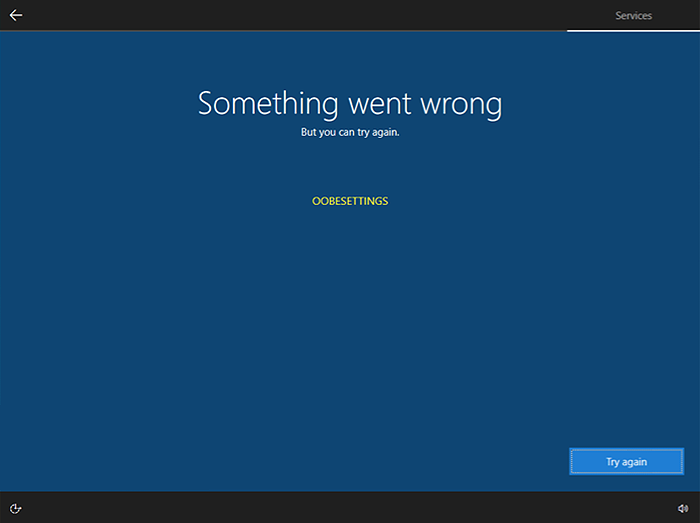
Oobesttings error is the blue screen of death error caused by some faulty settings inside the Windows registry. The good news is that this is not a hard error to fix and if by any chance you are one of the unfortunate people getting this dreaded annoying error, please do keep reading because we have several things that you can do in order to eliminate this issue from your computer.
Reboot your system
This is the easiest and straightforward solution and can work sometimes since if the system has not been properly rebooted in a while memory could be filled with various processes and it can trigger oobesettings error. A simple restart of the system can solve the issue by decluttering files and emptying memory.
Scan and repair with SFC
If rebooting the system was not helpful and sadly you still receive an error then let's scan and repair system files by using Windows built-in tool SFC. In order to use this, we will have to run the command prompt in elevated administrator mode. Follow instructions closely.
First click on the
search icon on the
taskbar and type in
CMD
The
command prompt will show as a search result, on the right side click on
Run as administrator.
Once it opens type in following command:
sfc /scannow and press
ENTER
Wait for the process to finish completely and restart your device after.
Repair the system registry
If the SFC scan has not repaired the issue then we will move to the next solution that involves repairing the system registry itself. Please note that you need to follow step-by-step for provided instructions since playing with the system registry can cause some serious issues if not done properly and can even render the system unstable. That being said, let's begin:
Press
⊞ WINDOWS +
R to open Windows run dialog
Type inside
regedit and press
ENTER
Inside registry editor locate the following key:
HKEY_LOCAL_MACHINE/SYSTEM/CurrentControlSet/Control/Session Manager/ Memory Management. and click on it to see properties
Inside the properties right-click on
CommitLimit value and choose
delete. Confirm with
yes.
Close registry editor and
reboot your computer.
Reset Windows 11
If even clearing key inside the registry editor has not helped next step would be to reset the system itself.
Press
⊞ WINDOWS +
I to open Windows
settings and click on
System on the left.
Inside on the right part click on
Recovery
In recovery click on the button next to
Reset this PC that says
Reset PC
Choose between
keep my files and
remove everything (a better option is remove everything, but be sure that you have all your files on a separate drive backed up)
Choose between
Cloud Download or
Local reinstall.
Click on next to
confirm choices and after that on
Reset to start the reset process.
Follow onscreen instructions until it is fully done.
 Error Causes
Error Causes
 Oobesttings error is the blue screen of death error caused by some faulty settings inside the Windows registry. The good news is that this is not a hard error to fix and if by any chance you are one of the unfortunate people getting this dreaded annoying error, please do keep reading because we have several things that you can do in order to eliminate this issue from your computer.
Oobesttings error is the blue screen of death error caused by some faulty settings inside the Windows registry. The good news is that this is not a hard error to fix and if by any chance you are one of the unfortunate people getting this dreaded annoying error, please do keep reading because we have several things that you can do in order to eliminate this issue from your computer.
